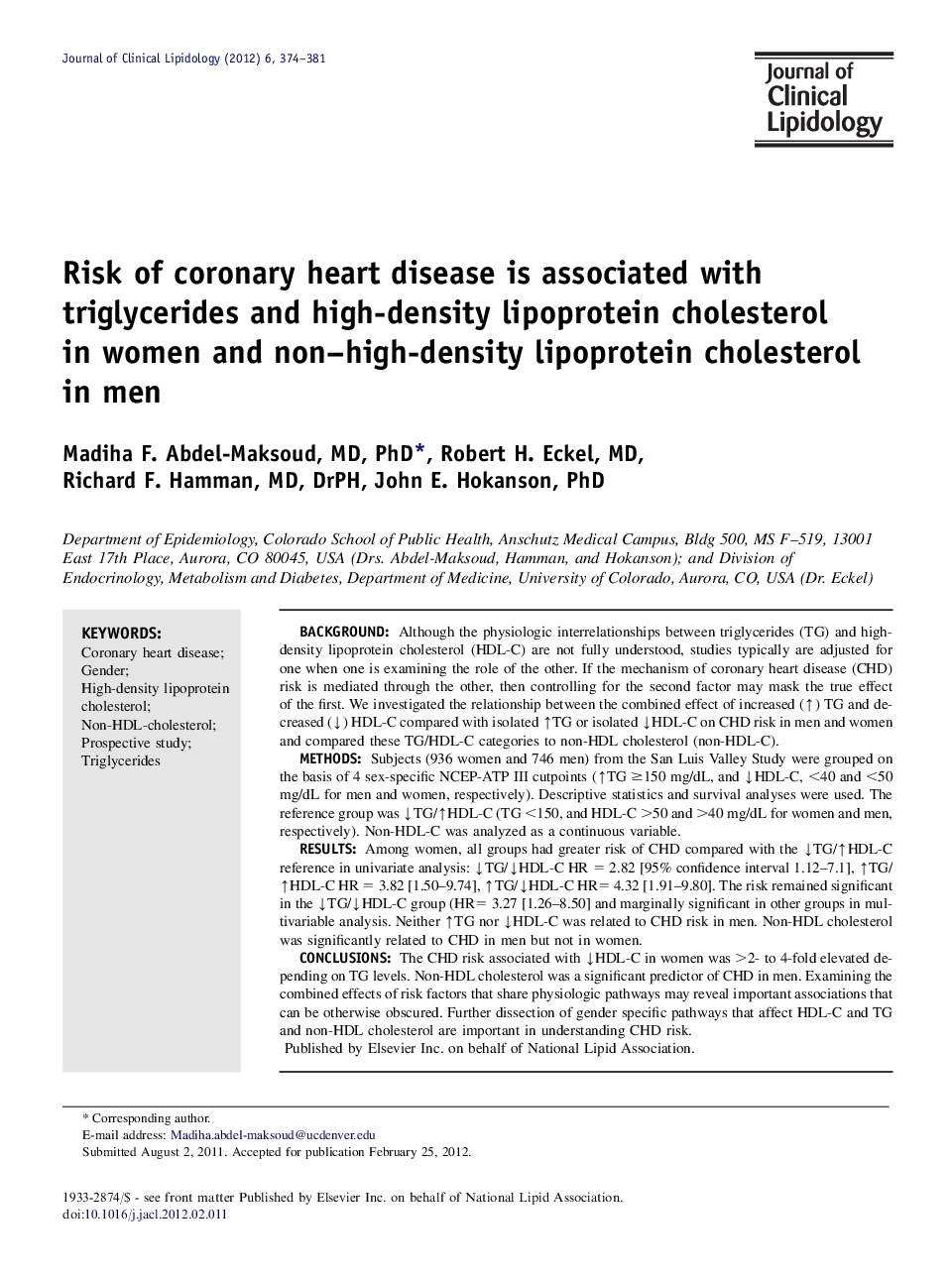| Article ID | Journal | Published Year | Pages | File Type |
|---|---|---|---|---|
| 2965903 | Journal of Clinical Lipidology | 2012 | 8 Pages |
BackgroundAlthough the physiologic interrelationships between triglycerides (TG) and high-density lipoprotein cholesterol (HDL-C) are not fully understood, studies typically are adjusted for one when one is examining the role of the other. If the mechanism of coronary heart disease (CHD) risk is mediated through the other, then controlling for the second factor may mask the true effect of the first. We investigated the relationship between the combined effect of increased (↑) TG and decreased (↓) HDL-C compared with isolated ↑TG or isolated ↓HDL-C on CHD risk in men and women and compared these TG/HDL-C categories to non-HDL cholesterol (non-HDL-C).MethodsSubjects (936 women and 746 men) from the San Luis Valley Study were grouped on the basis of 4 sex-specific NCEP-ATP III cutpoints (↑TG ≥150 mg/dL, and ↓HDL-C, <40 and <50 mg/dL for men and women, respectively). Descriptive statistics and survival analyses were used. The reference group was ↓TG/↑HDL-C (TG <150, and HDL-C >50 and >40 mg/dL for women and men, respectively). Non-HDL-C was analyzed as a continuous variable.ResultsAmong women, all groups had greater risk of CHD compared with the ↓TG/↑HDL-C reference in univariate analysis: ↓TG/↓HDL-C HR = 2.82 [95% confidence interval 1.12–7.1], ↑TG/↑HDL-C HR = 3.82 [1.50–9.74], ↑TG/↓HDL-C HR= 4.32 [1.91–9.80]. The risk remained significant in the ↓TG/↓HDL-C group (HR= 3.27 [1.26–8.50] and marginally significant in other groups in multivariable analysis. Neither ↑TG nor ↓HDL-C was related to CHD risk in men. Non-HDL cholesterol was significantly related to CHD in men but not in women.ConclusionsThe CHD risk associated with ↓HDL-C in women was >2- to 4-fold elevated depending on TG levels. Non-HDL cholesterol was a significant predictor of CHD in men. Examining the combined effects of risk factors that share physiologic pathways may reveal important associations that can be otherwise obscured. Further dissection of gender specific pathways that affect HDL-C and TG and non-HDL cholesterol are important in understanding CHD risk.
